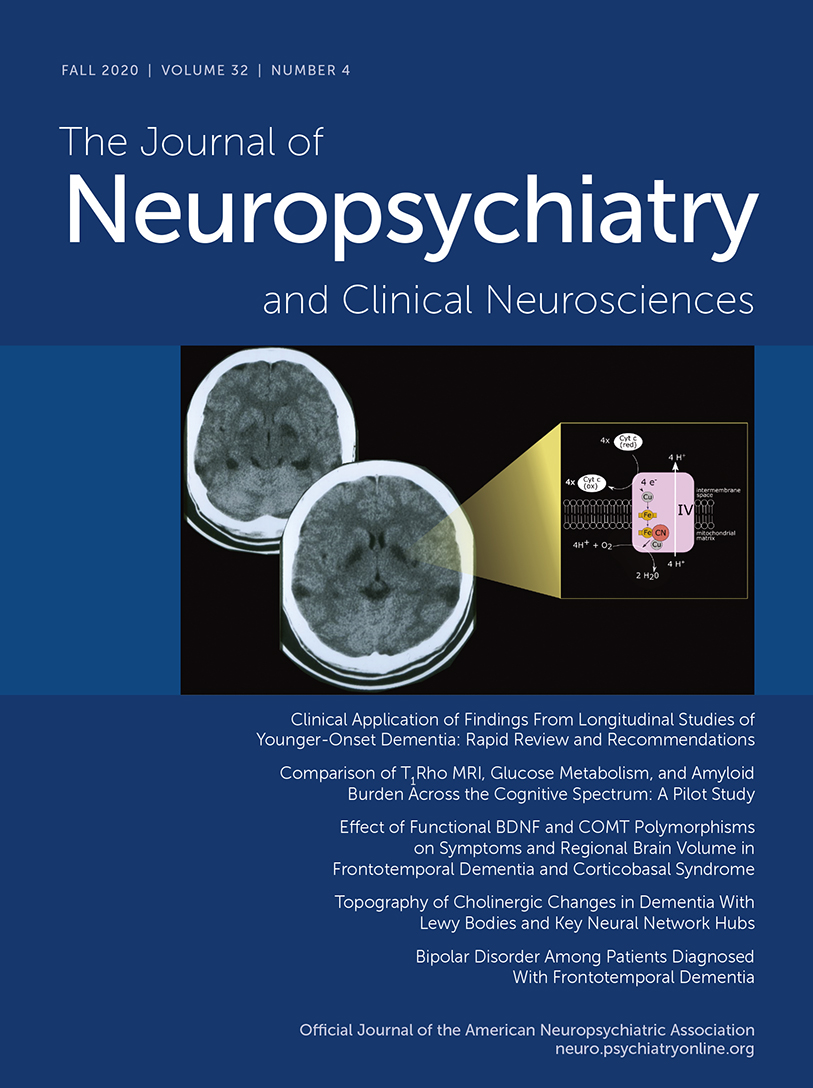Topography of Cholinergic Changes in Dementia With Lewy Bodies and Key Neural Network Hubs
Abstract
Objectives:
The authors investigated the topography of cholinergic vulnerability in patients with dementia with Lewy bodies (DLB) using positron emission tomography (PET) imaging with the vesicular acetylcholine transporter (VAChT) [18F]-fluoroethoxybenzovesamicol ([18F]-FEOBV) radioligand.
Methods:
Five elderly participants with DLB (mean age, 77.8 years [SD=4.2]) and 21 elderly healthy control subjects (mean age, 73.62 years [SD=8.37]) underwent clinical assessment and [18F]-FEOBV PET.
Results:
Compared with the healthy control group, reduced VAChT binding in patients with DLB demonstrated nondiffuse regionally distinct and prominent reductions in bilateral opercula and anterior cingulate to mid-cingulate cortices, bilateral insula, right (more than left) lateral geniculate nuclei, pulvinar, right proximal optic radiation, bilateral anterior and superior thalami, and posterior hippocampal fimbria and fornices.
Conclusions:
The topography of cholinergic vulnerability in DLB comprises key neural hubs involved in tonic alertness (cingulo-opercular), saliency (insula), visual attention (visual thalamus), and spatial navigation (fimbria/fornix) networks. The distinct denervation pattern suggests an important cholinergic role in specific clinical disease-defining features, such as cognitive fluctuations, visuoperceptual abnormalities causing visual hallucinations, visuospatial changes, and loss of balance caused by DLB.



